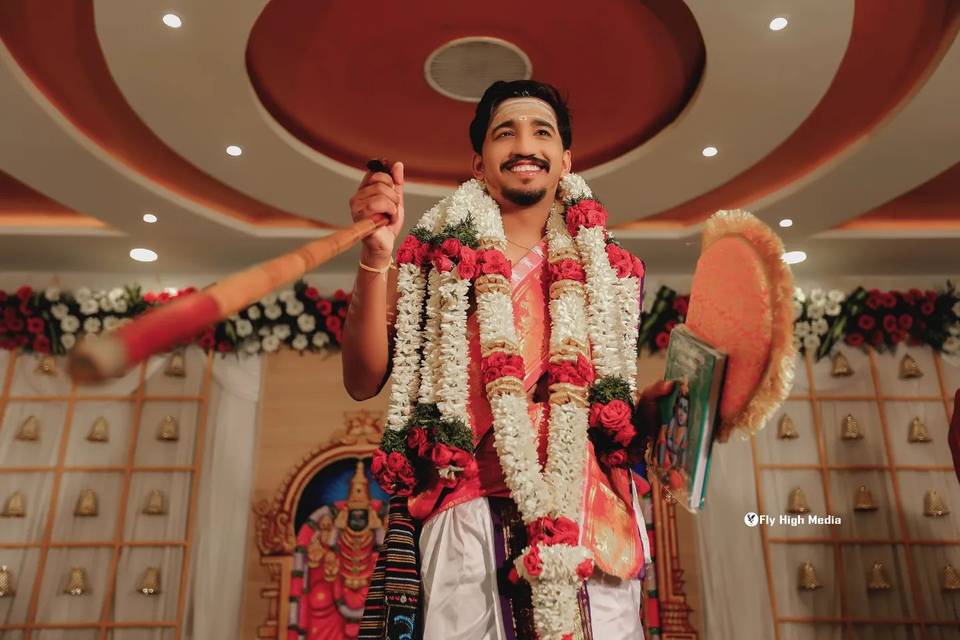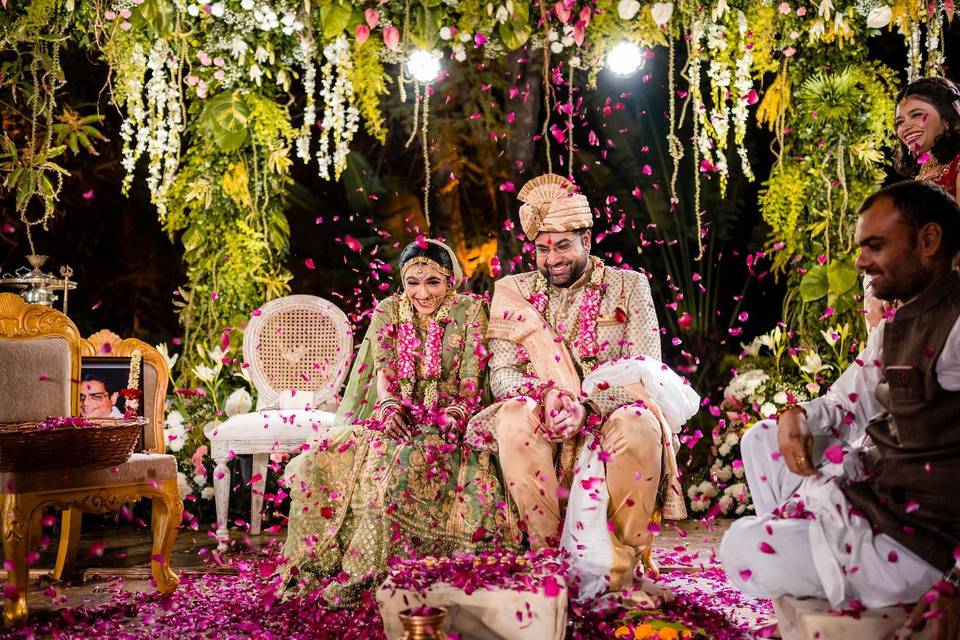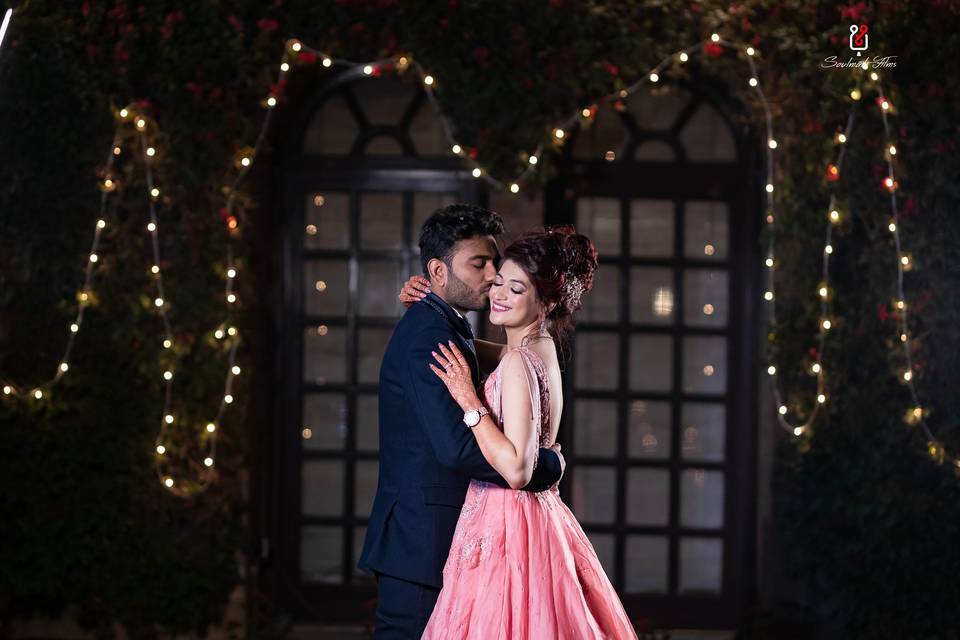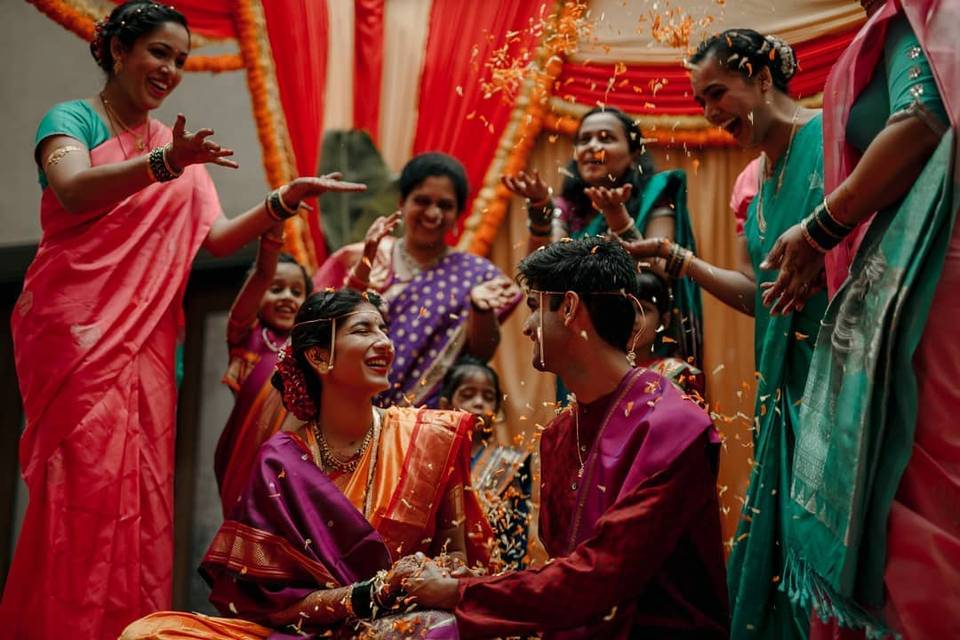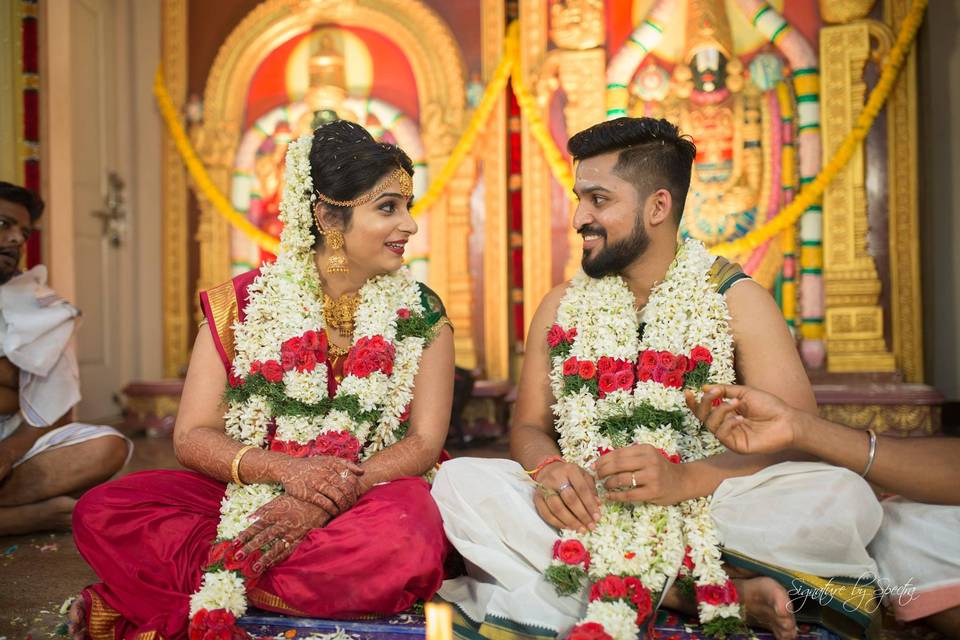The Ins and Outs of a Gujarati Shaadi: Clothing, Ceremonies, Culture, and More!
A Gujarati Shaadi is a highly auspicious occasion where the whole family gets together and celebrates this sacred lifelong commitment between two families. Let’s know more about its culture and traditions.


Image Courtesy: Biyani Photography
A big mixture of colours, rituals and customs, a Gujarati Shaadi shows the vibrant culture of its state. With its elaborate functions, before and after the wedding, it’s the real way of celebrating a big fat Indian wedding. Apart from the extravagant delicacies provided in rich quantities to the wedding guests, they get to see the amazing Gujarati dance performances such as Garba, making this wedding a visual treat in more ways than one.
A. Wedding Rituals
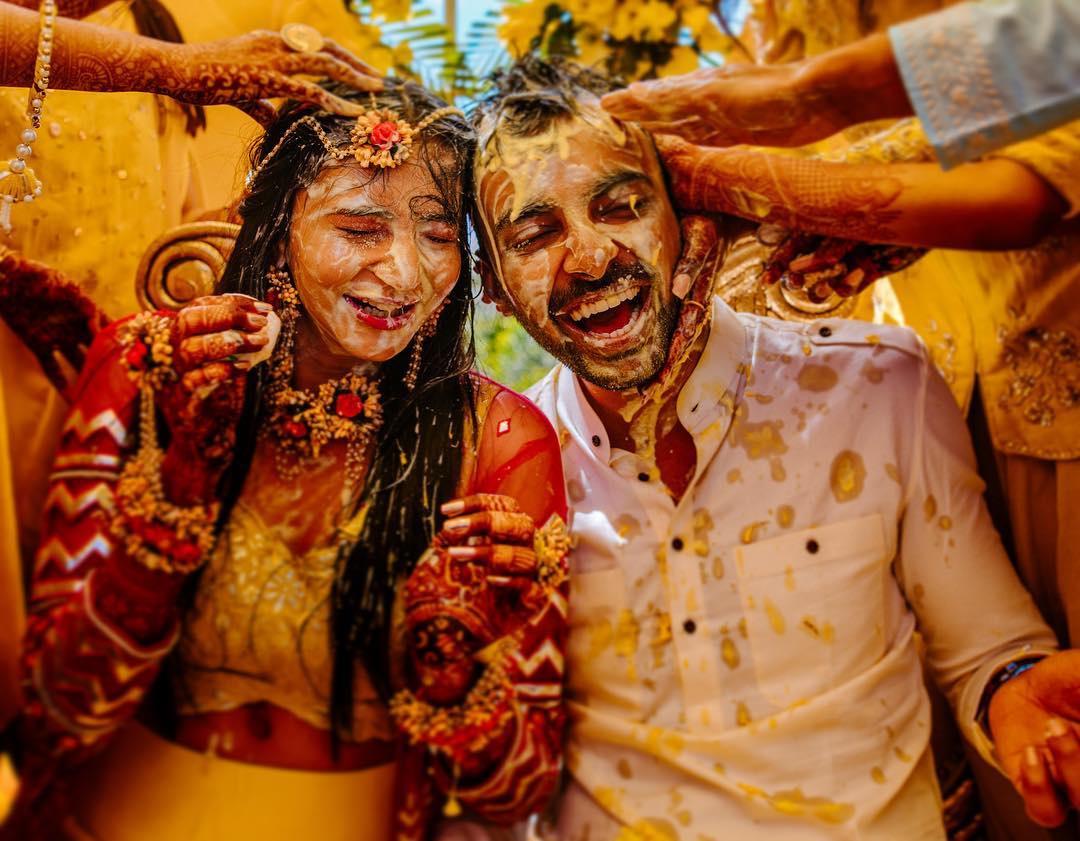
1. The Sagan and engagement
Marking the beginning of the pre-wedding ceremonies of a Gujarati Shaadi, the wedding is fixed between the bride and the groom in a formal capacity. The father of the bride visits the groom’s house along with 4 male members of his family and applies Chandlo on him. He also blesses his future son-in-law and gives him his Shagun.
The next ceremony is Gol Dhana, also known as engagement. The bride’s family visit the groom’s family and give them gifts such as sweets and savouries. The bride and groom exchange rings and are blessed by the family members.
2. The Mehndi Ceremony
The Mehndi ceremony takes place two days before the wedding, During this, the bride applies mehndi on her hands and feet to get ready for her wedding. Apart from her, other women also get their hands filled with intricate mehndi designs to signal their celebration of the marriage. A lot of women dance and sing along while the bride is getting her mehndi applied in order to keep the ambience bright and happy.
The Sangeet ceremony takes place after the Mehndi. On this day, both the families get together to celebrate by singing and dancing with Rass, Dandiya or Garba.
3. Pithi Ceremony
During the Pithi ceremony in a Gujarati Shaadi, the bride and groom sit at their respective houses on a low stool as a paste of turmeric, sandalwood, herbs, mogra and rosewater is applied on their face, hands and feet to clean away their impurities. Once it’s applied properly, they are bathed in rose water. If you want to make yours more fun, there are a few ideas for the Haldi ceremony you can try to make it more fun.
4. The Shaadi
At the time of the Gujarati Shaadi, the groom goes to the bride’s house on a horse, while his relatives walk and dance along. Often, a musical band accompanies the procession and many people even burst fire crackers to should how happy they are. Once the groom reaches her house he is welcomed by the bride’s mother with an Aarti. The Gujarati wedding then takes place according to the Hindu traditions and customs.
B. Gujarati Wedding Attire
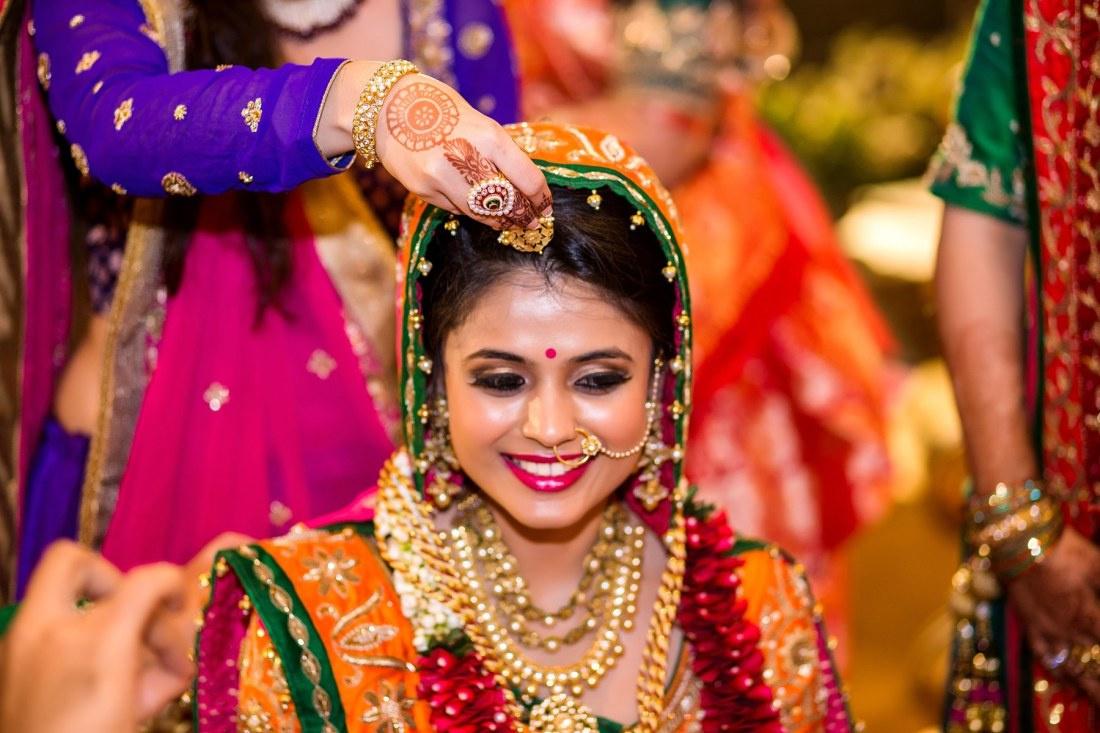
Image Courtesy: DKreate
During the beginning of the Gujarati Shaadi, the bride dresses in a Panetar saree gifted by her maternal uncle. However, as the ceremonies progress and reach their last leg, she changes into a Gharchola saree. Traditionally, she receives this saree from her in-laws, and the act of wearing it symbolises the start of her new life. It is a way of showing that she is now a part of a new family and home.
1. What is the Panetar saree?
A Gajji silk weave with a red border and white body, the Panetar saree is generally made with gold zari embroidery and red tie-dyed motifs. Earlier, before independence, the border of the saree used to be green, however, this Gujarati Shaadi ensemble went through a complete change and the border of the Panetar saree became saffron, which later turned to red.
2. What is the Gharchola saree?
The Gharchola saree is one that lies on the opposite spectrum when compared with the Panetar. The fabric for this kind of Gujarati saree is tied in Kutch and sent to Jamnagar for dying. It is woven by using silk and zari thread and covered in a variety of Bandhini designs like floral or religious motifs, and even peacocks. While the Gajji silk weave of a Panetar often looks quite simple, the Gharchola is the louder saree that celebrates the woman’s marital status.
As time has progressed, some new changes have been brought about in the bride and groom’s attire. Many brides have started opting for a lehenga instead of the age-old Panetar saree. While most of them go for the colour red, peach lehenga variants and green are being given a chance to shine in the bridal ensemble as well these days. Similarly, many grooms are now ditching the Dhoti Kurta and opting for kurta pajama instead for their wedding.
When it comes to jewellery in a Gujarati Shaadi, gold, Kundan and diamond are the most important part of her attire, with accessories like necklaces, rings, earrings, Maang Tikka, bangles, toe rings and gold Naths completing her bridal look.
The Gujarati Shaadi is a vibrant and rich festivity where the bride, groom and their relatives, all do their best to make the wedding a successful one.
To ensure that your wedding is absolutely perfect, get in touch with our wedding planners so that all the ceremonies can go off without a hitch!


